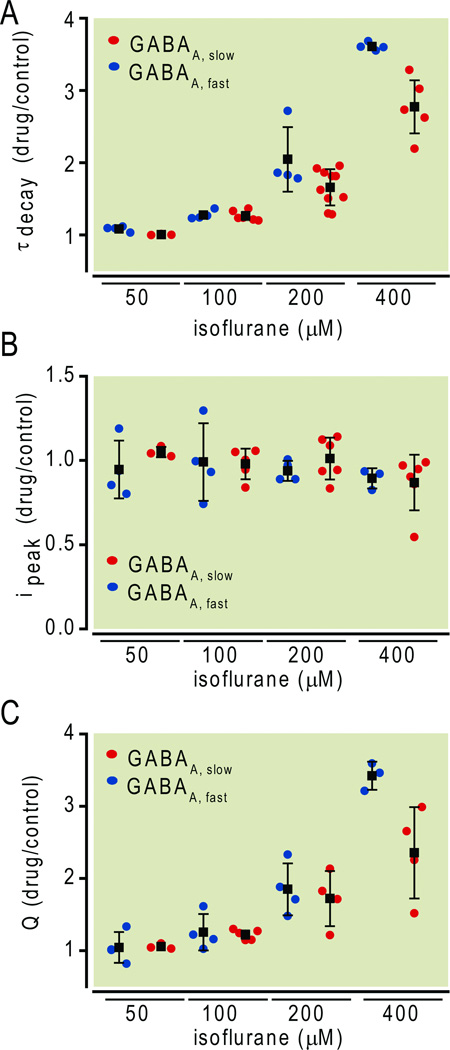Fig.4.
Comparison of isoflurane effects on fast and slow inhibitory postsynaptic currents (IPSCs). (A) Isoflurane slowed the decay of both fast and slow IPSCs in a concentration-dependent manner. (B) Isoflurane did not alter IPSC amplitude. (C) Isoflurane increased charge transfer for both types of IPSCs. At 400 µM, i.e., four times EC50 amnesia, it increased charge transfer more for fast than slow IPSCs (p < 0.05, two-tailed Student’s t-test, GABAA,fast n = 3, GABAA,slow n = 4). At other concentrations, there were no significant differences (p > 0.05, two-tailed Student’s t-test, GABAA,fast n = 4 at all concentrations, GABAA,slow n = 3, 5, 4, at 50, 100, 200 µM respectively). Data are plotted as mean ± SD. Note that results were obtained at 24 °C and 34 °C for GABAA,slow and GABAA,fast, respectively.

